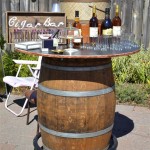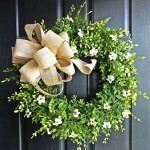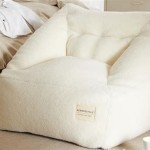How To Decorate a Folding Table for Thanksgiving
Thanksgiving is a holiday centered around food, family, and gratitude. However, hosting a large Thanksgiving gathering often necessitates temporary solutions for seating and dining space. Folding tables, while practical, often lack the aesthetic appeal desired for such a significant occasion. Transforming a basic folding table into an inviting and festive Thanksgiving centerpiece requires careful planning and execution, focusing on masking its utilitarian nature and enhancing its visual appeal.
The primary objective is to create a setting that reflects the warmth and abundance associated with Thanksgiving. This can be achieved through strategic layering of textiles, incorporating natural elements, and implementing creative centerpiece designs. The process involves more than simply covering the table; it requires a thoughtful approach to color palettes, textures, and overall table arrangement. Attention to detail is crucial in elevating the folding table from a functional necessity to an integral part of the Thanksgiving celebration.
Choosing the Right Table Covering
The foundation of any successful table decoration is the table covering. When dealing with a folding table, the covering serves not only as a decorative element but also as a means of concealing the table’s often unappealing surface and structure. Several options exist, each offering distinct advantages in terms of aesthetics and functionality.
A tablecloth remains the most common solution. Linen, cotton, and polyester blends are popular choices due to their durability and availability in a wide range of colors and patterns. For a Thanksgiving theme, consider tablecloths in autumnal hues such as burgundy, gold, burnt orange, or cream. Patterns like damask or subtle leaf motifs can add visual interest. The tablecloth should ideally extend beyond the edge of the table, creating a more elegant and finished look. The length of the overhang depends on personal preference; however, a drop of 12-18 inches is generally recommended.
Table runners offer a more contemporary approach. When used in conjunction with a tablecloth, a table runner adds a layer of visual complexity and texture. It can be placed lengthwise down the center of the table or across the width, depending on the desired effect. Alternatively, a table runner can be used directly on the folding table, providing a simpler, more casual aesthetic. Materials like burlap, velvet, or embroidered textiles can add a touch of rustic charm or sophisticated elegance. Choosing a runner in a contrasting color or texture to the tablecloth can enhance its visual impact.
For those seeking a more unconventional approach, consider using fabric remnants or decorative throws as table coverings. This can be a cost-effective and creative way to personalize the table setting. Quilts, for instance, can add a cozy and inviting feel, particularly for a farmhouse-style Thanksgiving. Be mindful of the fabric's properties; avoid using materials that are prone to staining or difficult to clean. Securing the fabric to the table with clips or double-sided tape can prevent it from slipping or bunching.
No matter the chosen covering, ensuring a smooth and wrinkle-free surface is essential. Ironing the tablecloth or runner prior to placement is highly recommended. If using a fabric with a tendency to wrinkle, consider using a fabric refresher spray or a steamer to remove any creases.
Creating a Captivating Centerpiece
The centerpiece serves as the focal point of the Thanksgiving table. It should be visually appealing, thematically appropriate, and proportionate to the size of the table. A well-designed centerpiece can elevate the entire dining experience, adding a sense of occasion and festivity.
Natural elements are particularly well-suited for Thanksgiving centerpieces. Gourds, pumpkins, squash, and cornucopias evoke the harvest season and add a touch of rustic charm. These elements can be arranged in a variety of ways, from simple groupings to elaborate displays. Consider using different sizes, shapes, and colors of gourds and pumpkins to create visual interest. A cornucopia overflowing with fruits, vegetables, and grains is a classic Thanksgiving symbol.
Floral arrangements offer another option for creating a striking centerpiece. Autumnal flowers such as chrysanthemums, sunflowers, roses, and dahlias in warm colors are ideal. Incorporating greenery such as eucalyptus, ferns, or berries can add texture and visual depth. The arrangement can be placed in a traditional vase or in a more unconventional container, such as a vintage bucket, a wooden crate, or a hollowed-out pumpkin. Consider the height of the arrangement; it should be tall enough to be visually impactful but not so tall as to obstruct guests' views across the table. Low arrangements allow for easier conversation.
Candles are essential for creating a warm and inviting atmosphere. Incorporate candles of different heights and sizes to add visual interest. Pillar candles in glass hurricanes offer a safe and elegant option, while votive candles in small holders can be scattered around the centerpiece. Consider using scented candles with autumnal fragrances such as cinnamon, apple pie, or pumpkin spice. Ensure that candles are placed away from flammable materials and are never left unattended. Battery-operated candles provide a safe and convenient alternative.
Additional elements that can enhance the centerpiece include pinecones, acorns, leaves, and branches. These natural items can be gathered from the outdoors or purchased from craft stores. They can be arranged around the base of the centerpiece or incorporated into the floral arrangement. Consider using metallic spray paint to add a touch of glamour to these natural elements. Remember to consider the scale of the table; a larger table can accommodate a more elaborate centerpiece, while a smaller table requires a more minimalist design.
Setting the Table with Style
The table setting encompasses all the individual elements placed at each guest's seat, contributing significantly to the overall aesthetic of the Thanksgiving table. Thoughtful consideration should be given to the choice of tableware, linens, and decorative accents.
Dinnerware is a crucial component of the table setting. Opt for plates that complement the color scheme and style of the table covering and centerpiece. White or cream-colored plates are versatile and can be easily paired with a variety of decorative elements. Alternatively, consider using plates with autumnal patterns or designs. Charger plates placed beneath the dinner plates can add a layer of elegance and formality. Consider using a mix of vintage and modern pieces for an eclectic look. Ensure that all plates are clean and free of chips or cracks.
Linens, including napkins and placemats, add texture and color to the table setting. Cloth napkins are more elegant than paper napkins and can be folded in a variety of decorative ways. Consider using napkin rings to add a touch of sophistication. Placemats provide a defined space for each guest's setting and protect the table from spills. They can be made of fabric, cork, or other materials. Consider using placemats that complement the color or texture of the tablecloth or table runner.
Glassware is another important element to consider. Choose glassware that is appropriate for the beverages being served. Wine glasses, water glasses, and juice glasses should be clean and polished. Consider using colored glassware to add a touch of visual interest. Stemware adds a more formal feel to the table setting. Grouping glassware together in a cohesive manner enhances the overall presentation.
Flatware should be arranged according to proper etiquette. Forks are placed to the left of the plate, knives to the right, and spoons to the right of the knives. The fork closest to the plate is for the salad, and the fork furthest from the plate is for the main course. The knife is placed with the blade facing the plate. The spoon is placed to the right of the knife. Dessert forks and spoons can be placed above the plate or brought out with the dessert course. Polishing the flatware before setting the table ensures a gleaming presentation.
Small decorative accents can add a personal touch to each place setting. Place cards indicate each guest's assigned seat and can be personalized with handwritten names or festive designs. Small favors, such as miniature pumpkins or personalized candies, can be placed at each place setting as a token of appreciation. Consider adding a sprig of fresh herbs or a small flower to each napkin ring for a touch of natural beauty. Attention to these details can elevate the table setting from functional to memorable.
Ultimately, the goal is to create a Thanksgiving table that is both beautiful and functional, reflecting the spirit of the holiday and providing a welcoming space for guests to gather and celebrate. By carefully considering the table covering, centerpiece design, and table setting, a standard folding table can be transformed into a stunning focal point for the Thanksgiving feast.

How To Decorate A Folding Table For Thanksgiving Redesigned Classics

Simple Thanksgiving Table Ideas You Ll Love Simply2moms

How To Make A Folding Table Look Stunning For The Holidays Holiday Settings Entertaining Dining Room Decor

Outdoor Thanksgiving Table Ideas Fall Back Patio Tour Alice Wingerden

A Sweet And Simple Thanksgiving Table

10 Ways To Set Up Thanksgiving Table That Adds Space The Family Handyman

10 Ways To Set Up Thanksgiving Table That Adds Space The Family Handyman

Thanksgiving Table Decor Picnic

How To Make A Folding Table Look Stunning For The Holidays

Simple Thanksgiving Table Ideas You Ll Love Simply2moms
Related Posts







